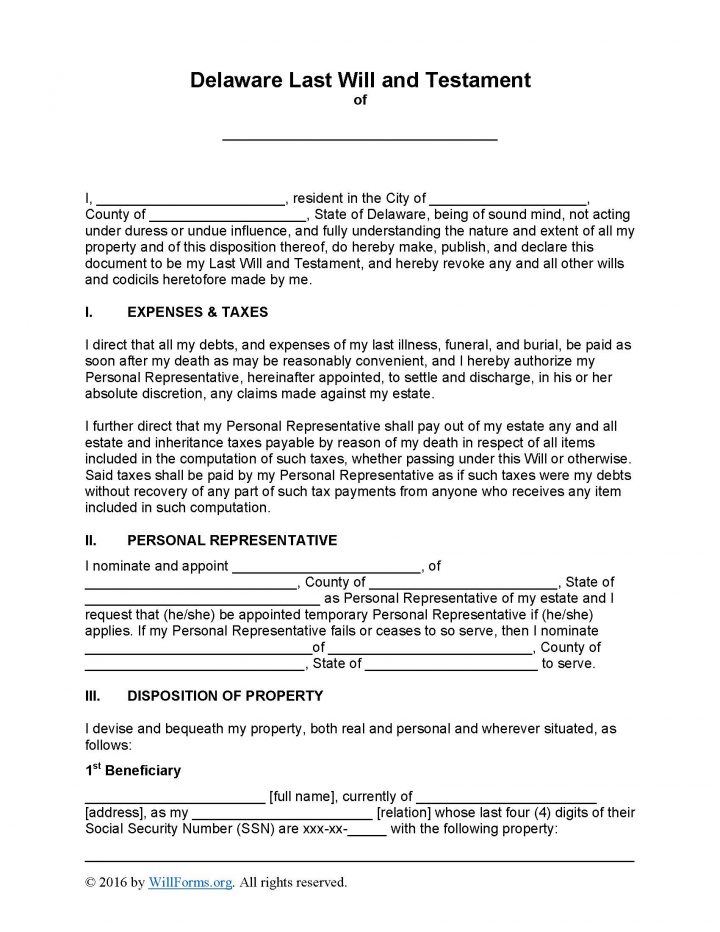
|
Delaware Last Will and Testament Form |
The Delaware last will and testament is a legally enforceable document that is available so that a Testator may create it. in writing, a document that would specifically outline how they would wish to have their estate secured and distributed to their chosen beneficiaries, after their death, The document will offer specific direction to an executor/personal representative, to oversee the desired distribution of the estate according to the written record of the Principal. Upon completion of the document, the parties must sign before two witnesses and, though optional, a notary. This document may be changed or revoked at any time.
Laws – Title 12, § 101 et seq
How to Write
Step 1 – To establish the author of the document by submit the full name of the Testator in the first line on the page, proceed to the paragraph and provide:
- The Principal’s name
- City of residence
- County of residence
- Review the remainder portions of the section
- Read titled section “Expenses and Taxes”
Step 2 – Personal Representative – The Principal may delegate a personal representative by providing the following:
- In line 1 – Enter the name of the delegated executor
- Address
- County
- State
Should the initial elected executor become unable or unwilling to serve, an alternate may be delegated in advance by submitting the following:
- The name of the alternate executor
- Address
- Alternate’s county of residence
- State
Step 3 – Disposition of Property –Enter all beneficiary information into the spaces provided on the form. If there are more than three beneficiaries, the principal may add a sheet with all of the same information, sign the added sheet and attach it to the document:
- Full name of each beneficiary
- Current address
- Relationship
- Enter the last four (4) digits of the beneficiary’s Social Security Number (SSN)
- The Principal must review the next paragraphs
- If additional instructions would apply,the Principal may add them on a separate sheet and again, attach to the document
Step 4 – Titled Sections and all Subsections- The Testator must read the following information
- Omissions
- Bond
- Discretionary Powers of Personal Representative (subsections A – K)
- Contesting Beneficiary
- Guardian Ad Litem Not Required
- Gender
- Assignment
- Governing Law
Step 5 – Binding Agreement – The Principal must review and agree to the first paragraph. They must then submit the following information into the second paragraph:
- Testator’s name
- Enter the date of exectution of the document (dd/m/yy)
- Testator’s name
- Printed name
- Submit the date of the signature – dd/m/yy
- Testator’s name
Step 6 – Witness Signatures/Notary Public – All signatories must be present before a notary public before signing the form
Witnesses –
- Respective witnesses must submit their signatures
- Current addresses
Testamentary Affidavit –
- The notary shall acknowledge this document after completion
- The notary shall provide the names of the parties
- The Testator must submit their signature
- Witnesses shall enter their signatures

